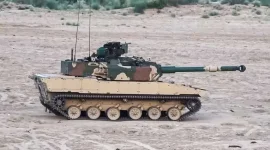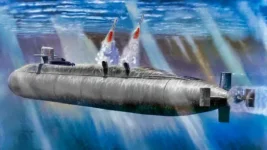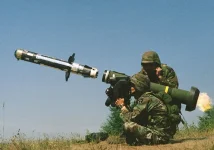- Views: 2K
- Replies: 15
India is advancing its aerial surveillance and defence capabilities with the development of a next-generation Airborne Early Warning and Control System (AWACS), known as the Netra Mk1A.
This strategic initiative is designed to counter emerging regional threats, particularly Pakistan's reported plans to acquire the J-35A stealth fighter jet from China.
The new system, developed by the Defence Research and Development Organisation (DRDO), represents a significant upgrade to India's airborne surveillance platforms.
Its primary mission is to detect and track aircraft with very low radar visibility, such as stealth fighters, from extended distances, ensuring the Indian Air Force (IAF) can maintain situational awareness and a tactical advantage in the skies.
The Evolving Security Landscape
The push for the Netra Mk1A is driven by regional military advancements, most notably the Pakistan Air Force's potential induction of the Shenyang J-35A.The J-35A is a modern, twin-engine stealth fighter developed by China, designed for air superiority and strike missions. Its low-observable characteristics, which include a specialised airframe design and radar-absorbent materials, present a formidable challenge to conventional radar systems, making early detection difficult.
In response to this challenge, the DRDO and the IAF have prioritised the development of an indigenous solution capable of neutralising the stealth advantage of such advanced aircraft.
Technological Leap with GaN Radar
At the heart of the Netra Mk1A's capabilities is its state-of-the-art Active Electronically Scanned Array (AESA) radar, which utilises Gallium Nitride (GaN) based technology. This marks a major technological step up from the Gallium Arsenide (GaAs) modules used in older radar systems.GaN-based components offer superior performance by providing higher power output and greater efficiency. This allows the Netra Mk1A's radar to generate a more powerful signal and achieve the sensitivity needed to detect the faint returns from low Radar Cross Section (RCS) targets.
The system is being engineered to operate across multiple frequency bands, making it more resilient and capable of identifying stealth aircraft at significant distances.
Advanced Processing and AI Integration
Beyond the advanced radar hardware, the Netra Mk1A will incorporate sophisticated software upgrades. It will feature advanced signal processing algorithms and Artificial Intelligence (AI) to analyse the radar data in real-time.This AI-driven system will be crucial for distinguishing the weak radar signature of a stealth aircraft from background noise and clutter, thereby reducing false alarms and improving the accuracy of tracking hostile targets.
This flow of precise, real-time data on the position and trajectory of enemy aircraft will be vital for the IAF. It will enable fighter jets like the Rafale and Su-30MKI to effectively intercept threats before they can pose a danger.
A Significant Upgrade Over Predecessors
The Netra Mk1A is a direct evolution of the currently operational Netra Mk1 system, which has been serving the IAF on Embraer EMB-145 aircraft since 2017.While the original Netra provides 240-degree coverage and a detection range of around 250-300 km for conventional targets, the Mk1A version is designed for the new era of aerial warfare.
Key enhancements in the Netra Mk1A include:
- Superior Detection: The GaN-based radar will significantly improve the detection range and resolution, specifically against stealth targets.
- Enhanced Connectivity: The system will feature improved data links for seamless integration into the IAF’s Integrated Air Command and Control System (IACCS), a robust network that connects all air defence assets for a unified view of the airspace.
- Improved Hardware: Upgraded power systems and cooling mechanisms will support sustained, high-performance operation during long missions.
Spearheaded by the DRDO's Bengaluru-based Centre for Airborne Systems (CABS), the Netra Mk1A program leverages insights from previous projects to ensure India's air defence framework remains resilient and ahead of emerging threats.




